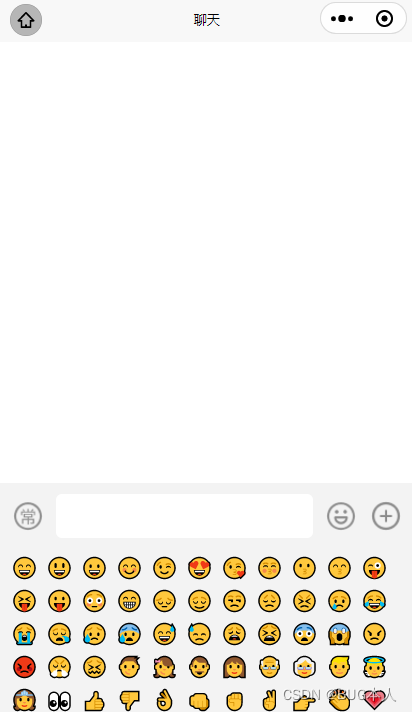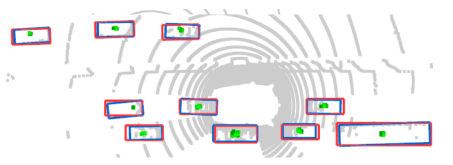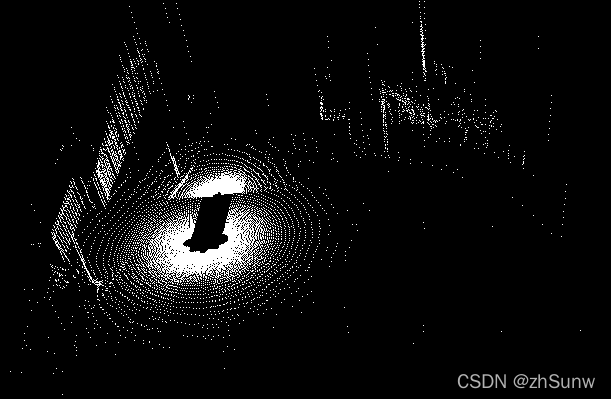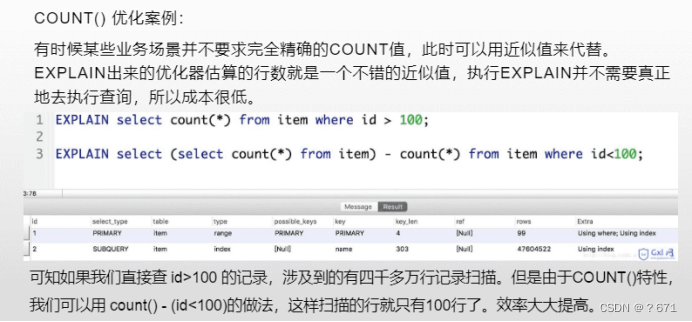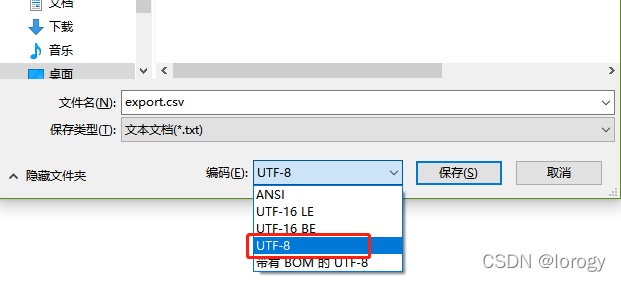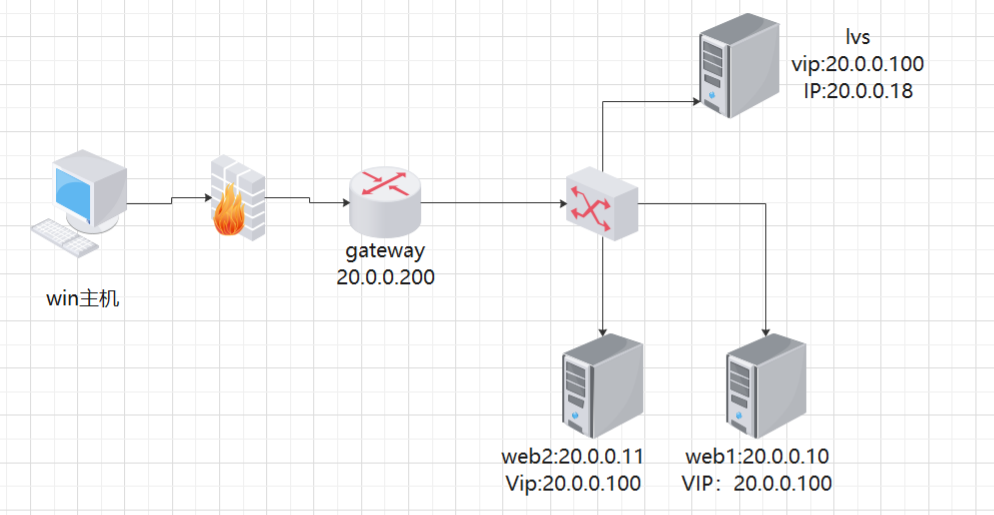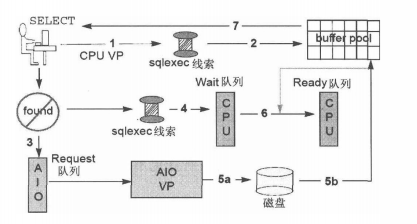当前位置:网站首页>Robust 3D Object Detection in Cold Weather Conditions
Robust 3D Object Detection in Cold Weather Conditions
2022-08-11 06:16:00 【zhSunw】
Robust 3D Object Detection in Cold Weather Conditions
Method
Point Sampling from 3D Shape Reconstructions
- Use alpha shapes to reconstruct a 3D surface S from the exhaust condensation point cloud in the original point cloud
- Uniformly sample N∈[100,1000] points from surface S
- A new sample is obtained by assigning the reflection intensity to each point according to the nearest principle
Point Cloud Augmentation Strategy
- Probabilistically placed in clean point cloud data in generating a large number of exhaust gas condensation point cloud samples:
- Pgas probability is generated in the rear center, right rear corner or left rear corner of the target
- Ptop probability is generated at the top of the target
- Paug total probability controls the variation of noise in the data
- Convert each point to spherical coordinates, resample the point cloud using the same resolution as the sensor's parameter settings: solves an issue where applying point cloud augmentation would violate the dataset's sensor physics
Noise Robustness Loss
Introduce noise loss: IoU between the real frame of the exhaust gas condensation point cloud and the predicted target frame (reduce the noise in the predicted target frame - calculate the loss with the number of noise points in the frame:
Schematic of how it works: 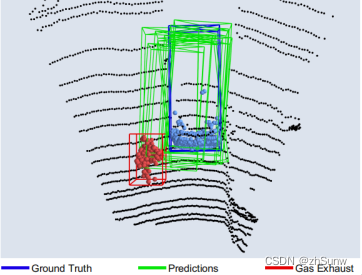
Experiments
Comparison of vehicle classes on the DENSE test set:
Aug represents the model retrained using data augmentation and adding noise loss.Most of the test data does not include exhaust emissions, and other weather effects can side-effect the enhancement of the model.
Comparison of vehicle class accuracy on the DENSE-GAS test set:
Combined with a noise robustness loss, forces the network to learn to distinguish between vehicles and nearby noise points
Accuracy comparison on the DENSE test set following the TANet noise experiment:
Noise represents the amount of noise added in the target box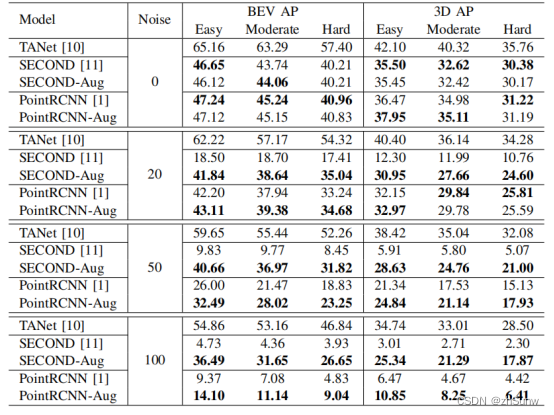
Ablation experiment:
PointRCNN's vehicle class accuracy on DENSE-GAS test set
- No noise loss is applicable, no matter what kind of data augmentation is not conducive to network training
- Using the proposed generation method is significantly better than adding random noise to the target box

The effect of noise loss weights on the model:
- Too low is not conducive to the model paying attention to noise
- Too high is easy to keep the model away from noise, but also the target position (only focus on noise)
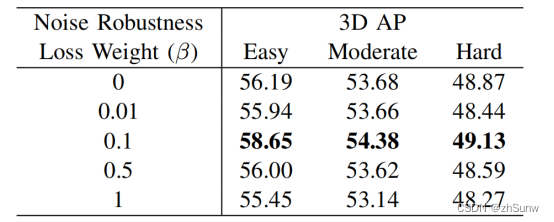
边栏推荐
猜你喜欢
随机推荐
数据库(其二)
更新GreenDAO实体类导致的编译错误
Toward a Unified Model
快照读下mvcc实现避免幻读
Maykle Studio - HarmonyOS Application Development Third Training
CVPR2020:Seeing Through Fog Without Seeing Fog
【高德地图】易采坑合集
CVPR2020: Seeing Through Fog Without Seeing Fog
AI-based intelligent image recognition: 4 different industry applications
梅科尔工作室-华为云ModelArts第一次培训
Redis主从复制的搭建
Fragment 和 CardView
MGRE环境下的OSPF综合实验
梅科尔工作室-第四次PR培训笔记(字幕和标题动画,关键帧动画和声音处理)
MGRE实验
四大组件之一BroadCast(其一)
OSPF综合实验
Use regex to verify whether the file name is legal
>>开发工具:开发工具排名对比
docker搭建redis主从和哨兵模式集群
